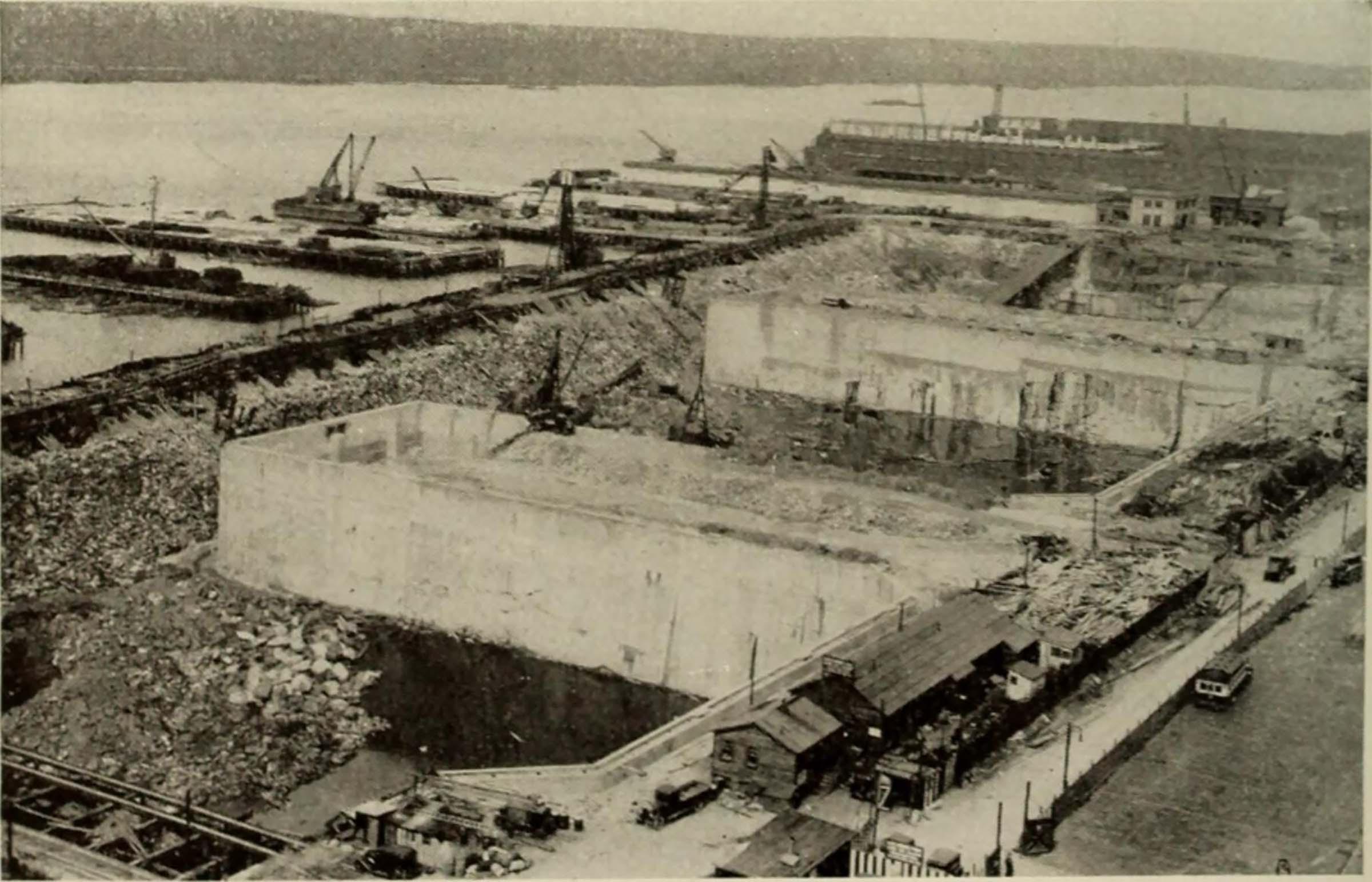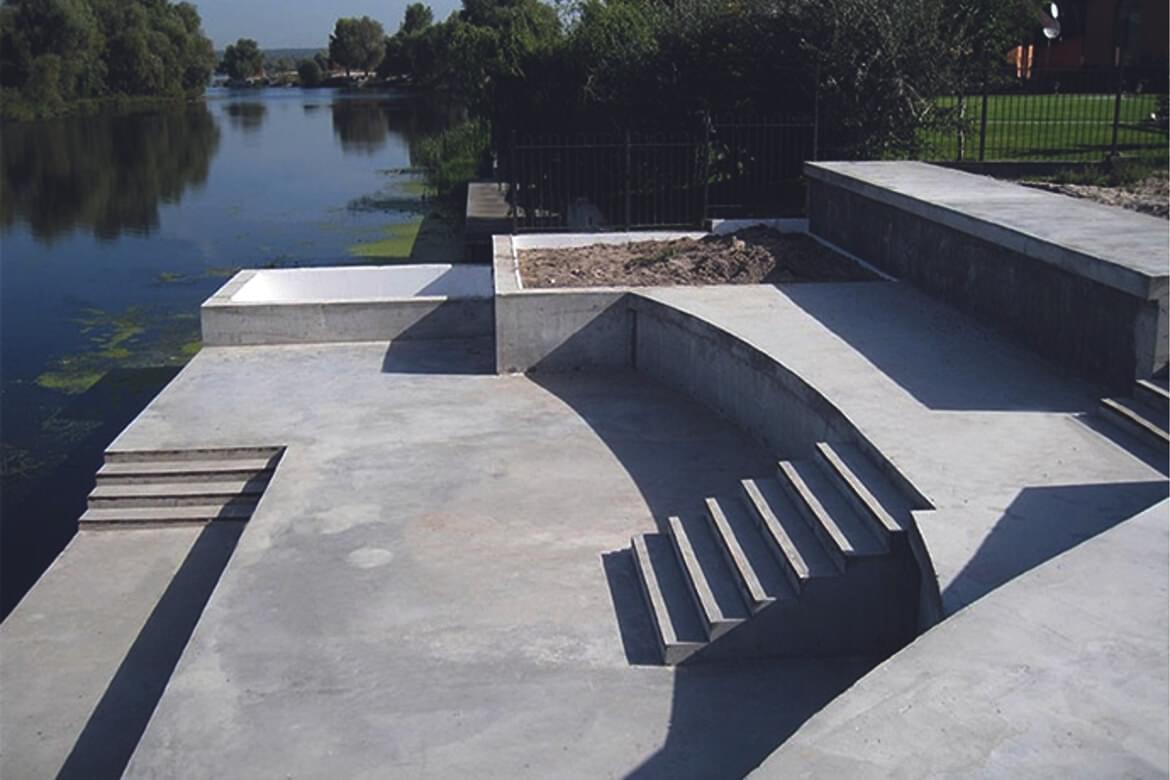Exploring the Different Usages of Bulkhead Frameworks in Modern Architecture
Bulkhead structures play a considerable duty in contemporary style, serving both visual and practical objectives. They can define areas, boost storage space solutions, and enhance lighting. In business setups, they work as centerpieces that mirror brand identity - Bulkhead on Lake Livingston. Additionally, their integration usually supports sound management and sustainable practices. Understanding the complete range of their applications reveals much about modern design trends and customer experience. What cutting-edge usages of bulkheads might arise in the future?
Defining Bulkhead Frameworks
Bulkhead frameworks play a crucial function in modern architecture, acting as crucial parts in numerous building styles. These structures are normally defined as elevated platforms or ceilings, typically used to conceal mechanical systems, wiring, or plumbing. Bulkheads can be discovered in both industrial and domestic settings, where they provide a smooth blend of performance and visual appeals. Their design can integrate illumination fixtures and various other ornamental elements, improving the overall aesthetic charm of a room.
Commonly constructed from products such as steel, timber, or drywall, bulkheads can be customized to fit the building design and demands of the building (Bulkhead on Lake Livingston). They offer not only to conceal unsightly framework but additionally to develop defined areas within open spaces. By handling the flow of a room, bulkheads contribute to the spatial company, making them a considerable aspect of modern architectural method. Their definition envelops both practical and aesthetic dimensions.
Functional Applications in Residential Design
Bulkhead frameworks play an essential duty in household design by facilitating room optimization techniques that take full advantage of functional areas. Furthermore, they add visual design elements that improve the aesthetic appeal of living rooms. Furthermore, these structures provide crucial architectural support solutions, ensuring the stability and security of the home.
Area Optimization Methods
As modern-day residential styles increasingly prioritize efficient use of area, ingenious techniques arise to optimize capability without giving up aesthetic appeals. One popular approach involves the integration of bulkhead structures, which can delineate areas while providing crucial storage space remedies. These structures can be used to develop upright storage units that boost both company and availability. In addition, multi-functional furnishings, such as convertible couches and collapsible tables, complements bulkhead layouts, permitting areas to adjust to varying requirements. Open layout further optimize spatial circulation, urging flexibility in usage. Including integrated shelving and recessed illumination within bulkheads additionally contributes to a structured setting, making certain that every inch of room is used efficiently and harmoniously within the overall layout.
Visual Style Elements

Architectural Assistance Solutions
In contemporary domestic layout, an efficient structural assistance remedy is essential for preserving the integrity of spaces while enhancing design and functionality. Bulkhead structures play a significant function in this situation, acting as both support and dividing aspects. They can hide mechanical systems, such as plumbing and electrical circuitry, while offering reinforcement to the ceiling and floor systems. By strategically positioning bulkheads, designers can develop defined areas within open flooring plans, improving usability without compromising architectural stability. In addition, these frameworks can accommodate lighting fixtures, contributing to both aesthetic appeals and practicality. To summarize, bulkhead frameworks are indispensable in household design, offering functional support options that enhance both the functionality and aesthetic charm of living rooms.
Enhancing Aesthetics in Business Spaces
When commercial spaces welcome cutting-edge bulkhead frameworks, they not only specify physical borders yet likewise substantially improve the general aesthetic appeals of the setting. These building aspects work as aesthetic prime focus, attracting interest and producing a sense of intrigue. By including diverse products such as timber, metal, or glass, bulkheads can mirror a brand name's identification and objective, adding to a cohesive style.
The critical placement of bulkheads can manipulate light and darkness, including depth and measurement to or else flat rooms. This interaction can transform a business location into a welcoming atmosphere, urging customer involvement. In addition, the use of color and texture in bulkhead design can evoke specific emotions, boosting the overall client experience. Eventually, the thoughtful combination of bulkhead frameworks raises the visual appeal of industrial rooms, making them not only practical but additionally aesthetically captivating, thereby cultivating an enduring impact on visitors.
Acoustic Performance and Noise Monitoring
Reliable acoustic performance plays an important function in modern architecture, specifically within commercial spaces where sound management is crucial. Bulkhead structures can greatly boost acoustic top qualities by absorbing sound, reducing reverberation, and mitigating noise transfer between locations. These attributes are specifically helpful in atmospheres such as workplaces, restaurants, and theaters, where clear interaction and a positive acoustic experience are critical.
The critical positioning and layout of bulkheads can aid create sound-buffer areas, effectively isolating loud locations from quieter ones. Materials utilized in bulkhead building, such as acoustic panels and soft surfaces, add to their sound-dampening capacities. Furthermore, the unification of bulkheads permits for the combination of sound-absorbing aspects without compromising aesthetic allure. By attending to acoustic performance, designers can develop unified settings that improve comfort, boost customer experience, and advertise performance, making bulkheads an essential element in the layout of modern industrial rooms.
Incorporating Bulkheads for Effective Space Application
Typically ignored, the integration of bulkheads in building style can greatly enhance space utilization in contemporary structures. These structural elements offer multiple sensible functions, using a means to conceal mechanical systems, electrical circuitry, and plumbing without compromising appearances. By strategically placing bulkheads, engineers can produce defined areas within open layout, thereby promoting better organization and flow.
Bulkheads can incorporate storage remedies and lighting features, making the most of the performance of otherwise wasted vertical area. In household setups, they may delineate zones such as cooking areas or living locations, while in industrial spaces, they can enhance the effectiveness of formats by plainly marking paths and workplace.
Eventually, the thoughtful combination of bulkheads adds to a more well organized and visually enticing atmosphere, allowing for versatile areas that can develop with the needs of their passengers. This technique not only optimizes area yet also cultivates a more unified interaction in between form and function.
Bulkheads in Public Design

Architectural Aesthetic Enhancements
While many architectural components aim for capability, bulkheads in public design serve a dual objective by enhancing visual allure. These structures usually develop visual rate of interest via their layout, integrating flawlessly with surrounding aspects. By employing numerous materials, appearances, and shades, bulkheads can add to a special identity for public areas, such as flight terminals, museums, and libraries. Their strategic positioning assists to mark locations, directing site visitors while adding depth to the general design. Additionally, bulkheads can accentuate lights, developing vibrant ambiences that change throughout the day. This aesthetic enhancement not just elevates the site visitor experience yet also cultivates a local color, making bulkheads a crucial consideration in modern public style. Generally, bulkheads symbolize the blend of form and function.

Structural Assistance Solutions
As architects look for ingenious methods to improve the structural honesty of public spaces, bulkheads become important elements in the layout and building and construction procedure. These structures supply critical support, especially in areas based on heavy foot web traffic or vibrant tons. By distributing weight equally, bulkheads assist prevent architectural failing while permitting for functional design alternatives. In get more huge places, such as stadiums and convention facilities, bulkheads are usually integrated right into the overall building framework, guaranteeing stability and safety. Furthermore, they can assist in the unification of utilities and mechanical systems, adding to the efficiency of area use. Eventually, bulkheads stand for an essential solution in modern-day public design, reinforcing both functionality and protection in community-focused settings.
Environmental Protection Measures
Including environmental management actions right into public architecture has actually ended up being significantly essential as city designers focus on sustainability along with architectural assistance. Bulkhead frameworks offer a twin purpose in this respect, functioning as barriers versus erosion and flooding while simultaneously enhancing the aesthetic charm of city Look At This landscapes. Their layout frequently includes natural environments such as greenery, which can enhance air top quality and give habitats for wild animals. Additionally, bulkheads can be engineered with absorptive materials that enable water absorption, minimizing runoff and advertising groundwater recharge. This integration of ecological considerations not just preserves the setting yet likewise promotes neighborhood durability versus environment modification. By using bulkheads properly, designers add to sustainable city growth that straightens with modern environmental goals.
Future Fads in Bulkhead Layout
Emerging patterns in bulkhead style show a growing focus on sustainability, development, and capability in modern design. Designers are increasingly integrating environment-friendly products, such as recycled compounds and bioplastics, to decrease environmental effect. Furthermore, the assimilation of smart modern technology is becoming common, allowing bulkheads to offer multi-functional functions, consisting of energy storage and climate control.
In metropolitan setups, modular bulkhead systems are getting traction, offering adaptability in layout and convenience of installment. These systems can be adjusted to numerous landscapes, enabling for efficient area utilization. In addition, aesthetic considerations are evolving; bulkheads are currently being designed to enhance aesthetic allure, commonly including imaginative aspects that resonate with neighborhood culture.
As environment durability comes to be a concern, future bulkhead designs will likely focus on flooding defense and stormwater administration, making sure structural integrity while addressing ecological difficulties. This shift signifies a holistic strategy to style that fulfills both human requirements and eco-friendly obligations.
Regularly Asked Questions
What Products Are Commonly Used for Bulkhead Building And Construction?
Typical materials for bulkhead building and construction include concrete, steel, timber, and composite materials. These options give longevity, architectural integrity, and resistance to ecological elements, making them suitable for numerous applications in building and design projects.
How Do Bulkheads Impact Structure Power Effectiveness?
Bulkheads enhance building power efficiency by offering thermal insulation and decreasing air leak (Bulkhead on Lake Livingston). They aid preserve indoor temperatures, thus decreasing home heating and cooling needs, ultimately bring about lower power prices and enhanced ecological sustainability
Are There Any Type Of Structure Codes Specific to Bulkhead Structures?
Yes, constructing codes certain to bulkhead structures exist, differing by place. These laws generally resolve safety and security, architectural stability, and accessibility, making certain that bulkheads satisfy called for criteria for building and design within a provided territory.
Can Bulkheads Be Conveniently Customized or Eliminated Later?
Bulkheads can often be changed or eliminated, depending upon their design and construction. Nonetheless, such alterations might call for mindful preparation and adherence to building codes to ensure structural integrity and safety and security are maintained throughout the procedure.
What Are the Expenses Connected With Installing Bulkhead Frameworks?
The costs related to mounting bulkhead structures can vary substantially, generally influenced by materials, style complexity, and labor. Generally, expenditures vary from moderate to high, relying on the project's specific requirements and area.
Bulkhead frameworks play an important role in modern style, serving as essential components in numerous building styles. Bulkhead frameworks play a necessary role in residential design by facilitating space optimization approaches that optimize functional areas. Commonly ignored, the assimilation of bulkheads in architectural layout can greatly improve space use in modern-day buildings. As engineers look for innovative methods to boost the architectural stability of public spaces, bulkheads arise as crucial components in the design and building procedure. The prices Find Out More connected with mounting bulkhead frameworks can differ considerably, typically influenced by materials, design intricacy, and labor.